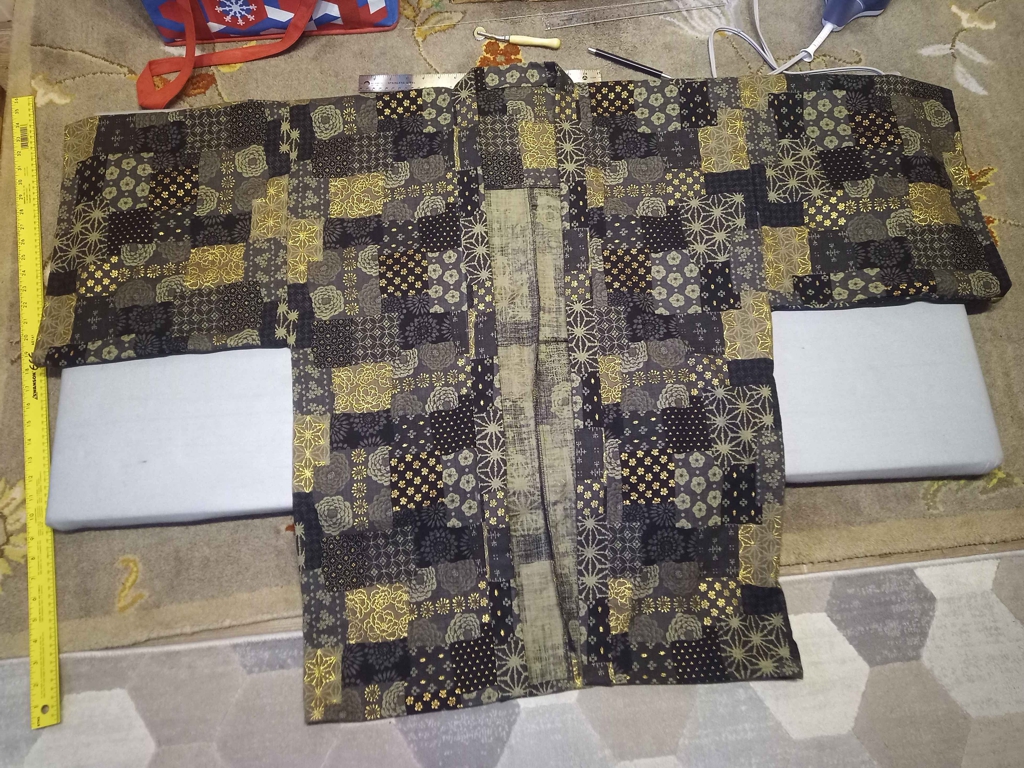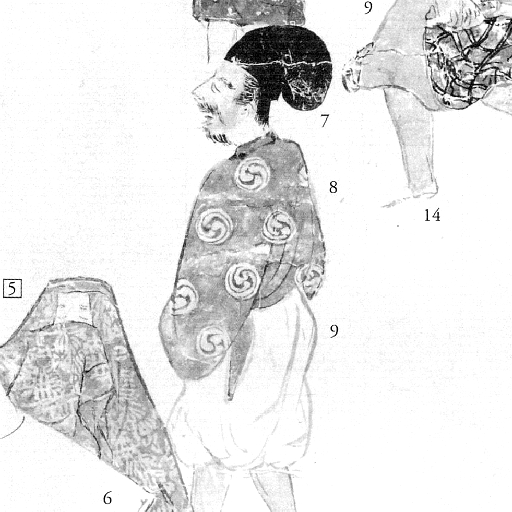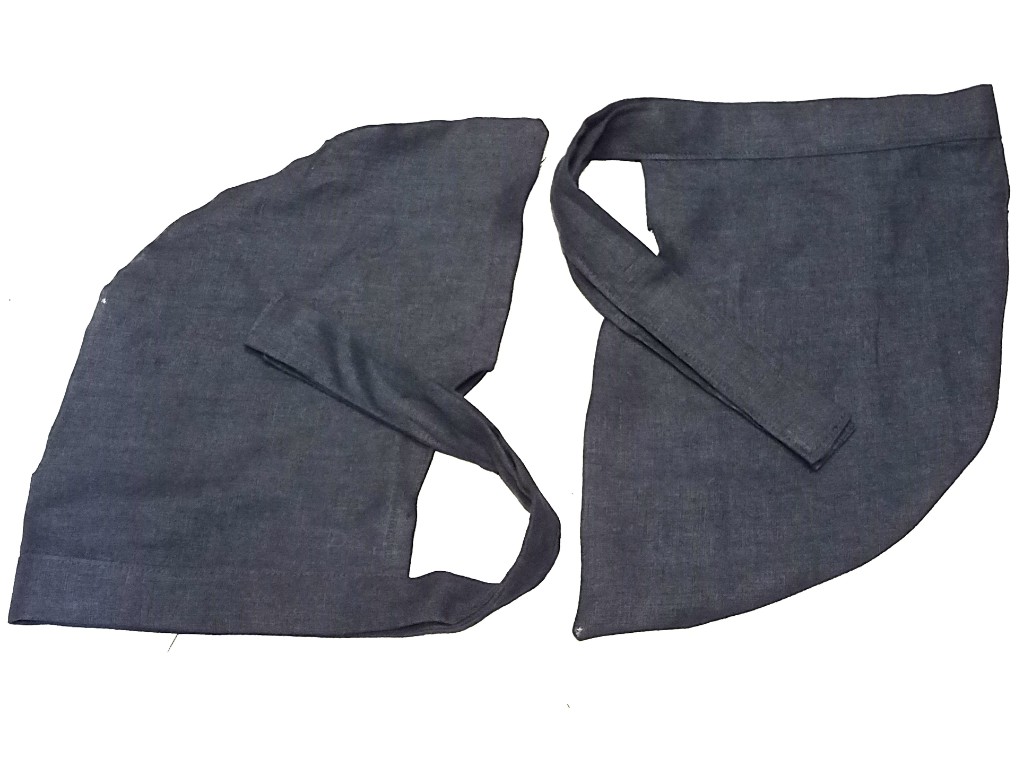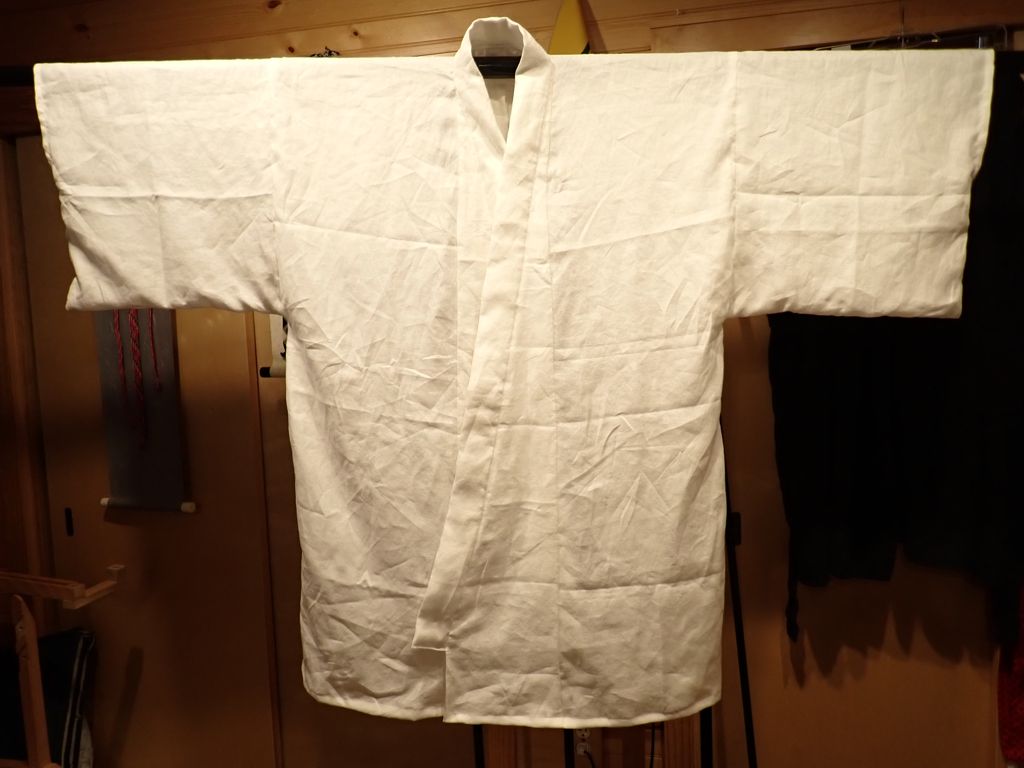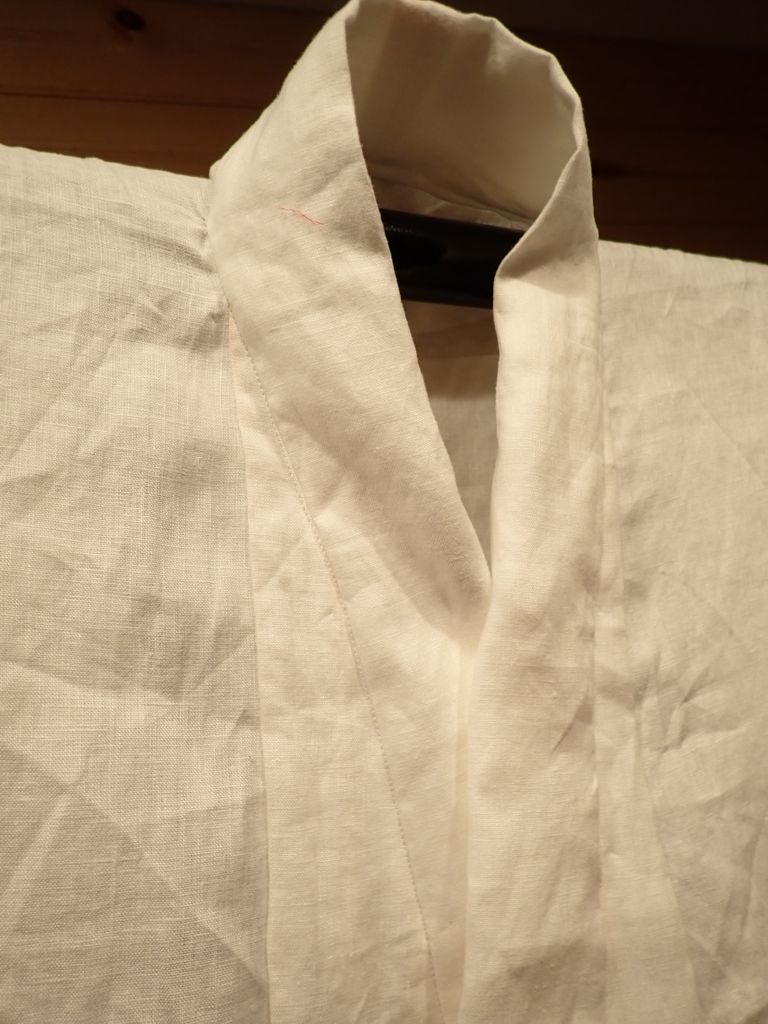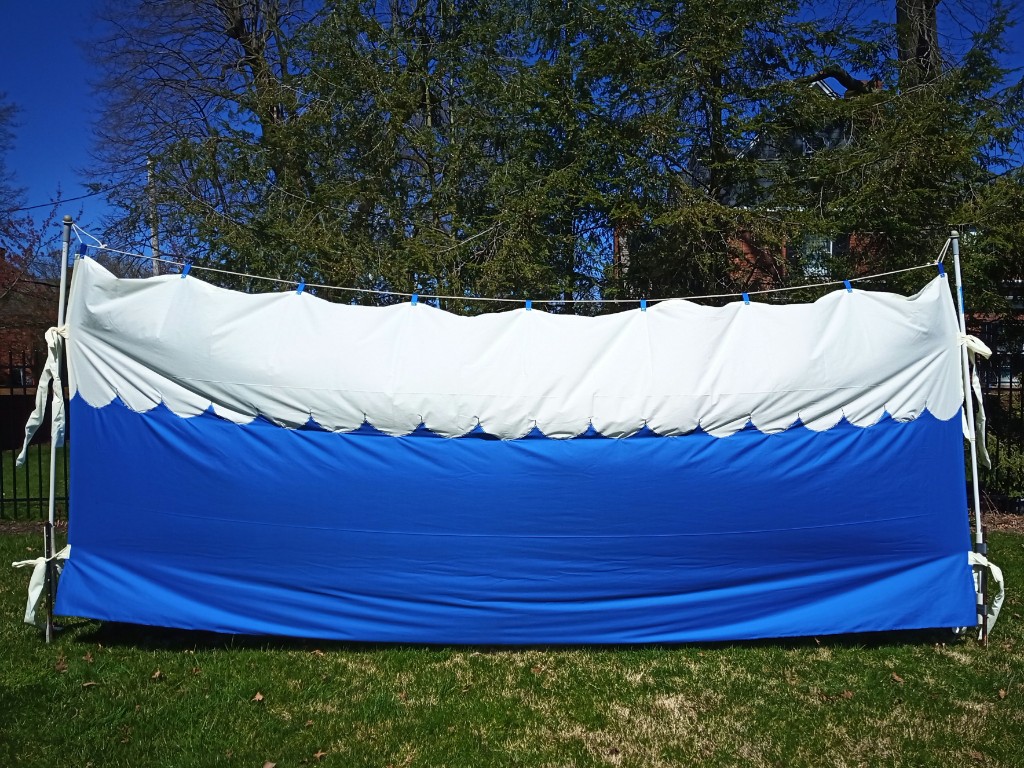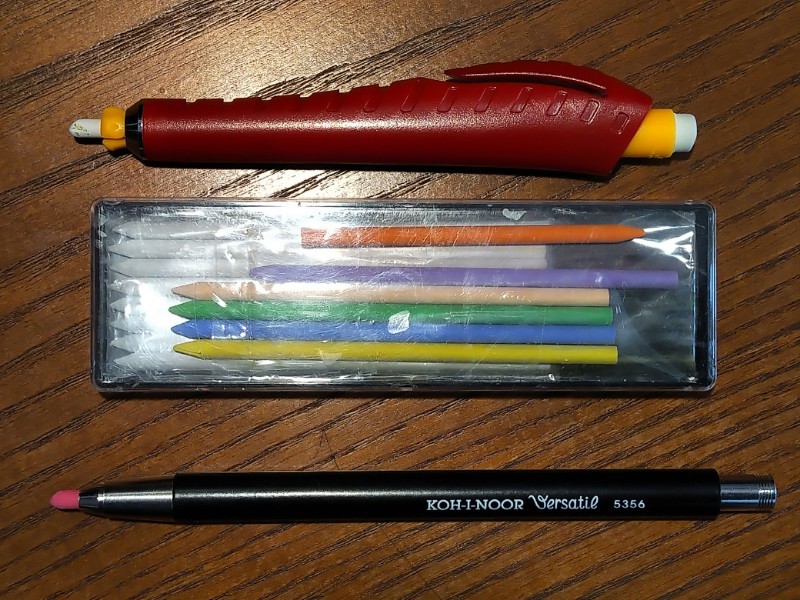Sweetie and I were in a fabric store a few weeks ago, and they had a selection of faux boro fabric in several colorways. I really don’t need another happi coat, but they always come in handy and are a way to add another layer to a basic outfit as the evening cools off at Pennsic. Plus, one of the colorways was “black and gold”, which fits into the aesthetic we have here in the Debatable Lands.
Happi were some of the first Japanese garments I ever made for SCA wear, and they are still fun to make. They have a partial lining that helps to make them very durable. They are a good use for a a few yards of fabric that would be uncomfortable or distracting to wear as just about any other garment. The pattern I use is based on Folkwear 129, “Japanese Hapi & Haori“, but I no longer really need to refer to the pattern, I can just make one mostly from memory.
I’m going to save this one probably until January, then wear it at our Baronial 12th Night event, which is the SCA’s version of a Winter Holiday party.

